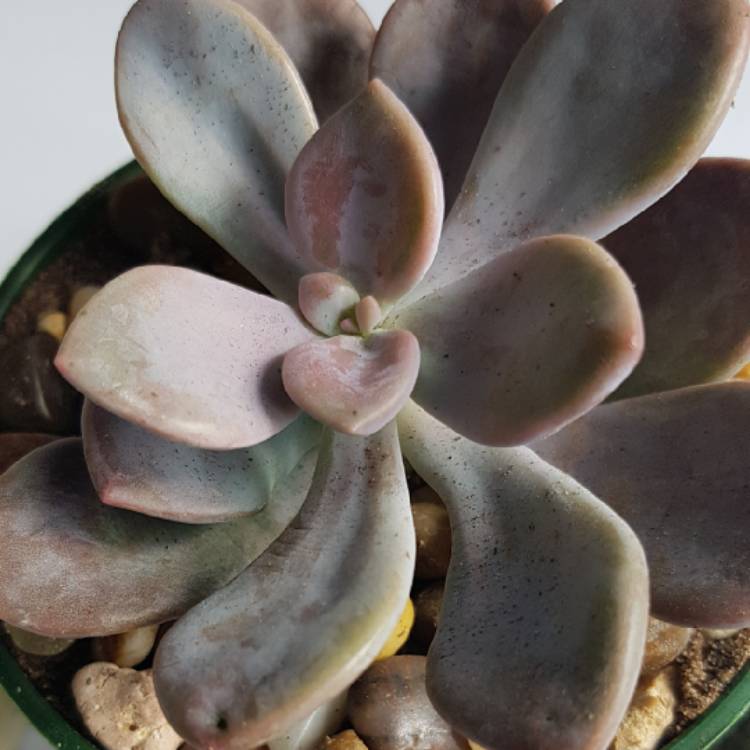
It could be planted in your garden or in pots, and they can be grown in virtually all types of soil. Growing a Graptopetalum paraguayense peach doesn’t really require a lot of effort. How do you plant Graptopetalum paraguayense peach? Simply collect the seeds from seed pods or buy them in stores, then stitch them into a sterilized potting mix. It will take a few more weeks for fresh baby plants to form.įurthermore, you can utilize their seeds to propagate new plants. It will take around two weeks for the roots to form.

You can put them in the soil once they’re dried.
Plant them in a well-draining potting mix after that. After that, you must wait a few days and store them in a dry spot away from direct sunshine. However, it might be beneficial to speed up the roots process, especially if you are propagating them with the leaves. If you choose, you can soak the cut ends in rooting hormone. Also, make sure you’re using a healthy, lush leaf for this process. To remove them, gently twist them away from the plant. When removing the leaf off the plant, make sure you get the entire leaf and that there are no leftovers on the stem. To begin, gently remove one of the plant’s leaves. Within two weeks, you should notice them growing roots, and it will take another four weeks to finish the rooting process and create new growth. Avoid exposing the specimen to direct sunlight, and water them once every several days if the soil appears to be dry. When the cut edges get calloused, plant them in a well-draining soil mixture. However, many people use this in order to speed up the propagation process and achieve consistent outcomes. If desired, soak the cut edges in a rooting hormone. Avoid utilizing dehydrated plant cuttings. Furthermore, while collecting cuttings, make certain that you are receiving them from a plant that appears to be healthy. During this time, they will be able to develop callousness. First, take a stem cutting and let it dry for a number of days. However, using the leaf cutting approach to propagate them will take more time. However, propagating Graptopetalum paraguayense peach from leaf cuttings is similarly simple. The simplest method is to grow them using stem cuttings. Ghost plant propagation is a simple method. How do you propagate Graptopetalum paraguayense peach? In terms of frequency, you may feed them every two weeks. Fertilizers could be used in the spring or summer.įurthermore, when feeding them, make sure you do so at a quarter or half strength. However, additional fertilizers will provide that extra stimulation for the plants to grow vigorously. You may also produce a sandy soil, which would aid in the drainage of the potting media.įertilizer: It is not necessary to fertilize the Graptopetalum paraguayense peach. The goal of adding perlite is to speed up the drainage of the soil mix. If you want to go on with a proper soil mix, you might use a cactus potting mix in conjunction with perlite. Soil and PH / Type: Graptopetalum paraguayense peach would also do well if grown in a free-draining soil mix. You can even forego watering them during the winter and let them rely only on winter rain. 
Watering them in cooler weather, on the other hand, may be done once every two weeks. You must, however, continue to provide them with appropriate water. Graptopetalum paraguayense peaches are grown in hot and arid climates. Watering: It is critical that you water them properly because this will have a greater impact on the plant’s health. This will aid in greater air circulation. Especially if you allow them to grow in poorly draining soil.įurthermore, if you’ve grown them in raised beds, you can separate them. Having said that, they cannot endure high humidity levels. Temperature and Humidity: Hot temperature conditions are ideal for these plants. When growing the Graptopetalum paraguayense peach as an outdoor plant, it is ideal to position it in a location where it will receive strong sunlight to partial shade. You must be careful when growing them indoors and offer adequate sunlight because they cannot tolerate low light for lengthy periods of time. If you believe it still needs more sunlight, you may try taking the plant outside a few times and then bringing it back in.įurthermore, when exposed to insufficient sunlight, Graptopetalum paraguayense peach becomes etiolated. It could be the brightest sunny window in your house. Light: When growing Ghost plants, you must, without a doubt, choose the brightest sunny area in your home. They are well-known for their blue green leaves, which frequently contain a tinge of lavender, pink, and blue pastels. These plants are also known as ghost plants and mother of pearl plants. Graptopetalum paraguayense peach is a wonderful, adaptable plant. How do I care for my Graptopetalum paraguayense peach?






 0 kommentar(er)
0 kommentar(er)
